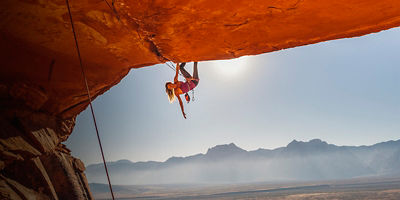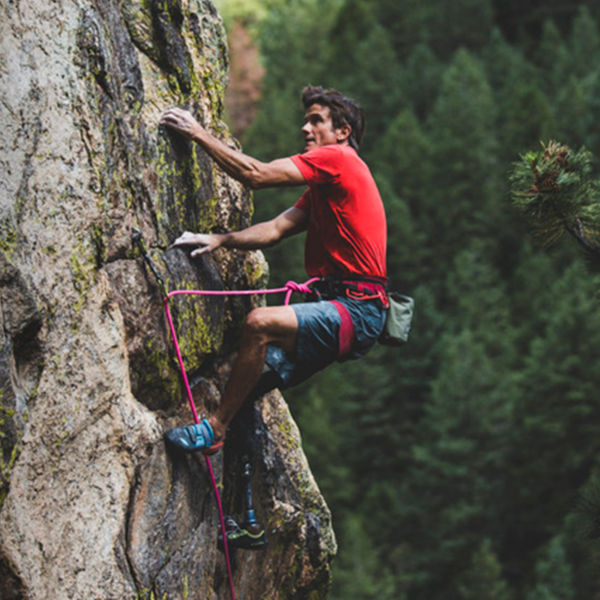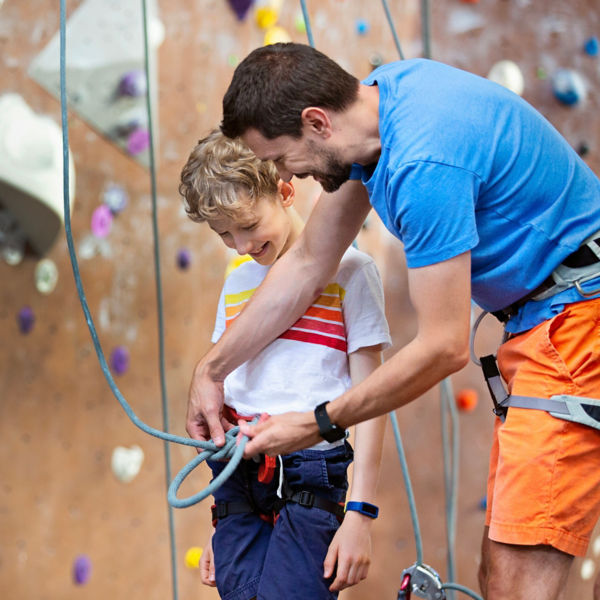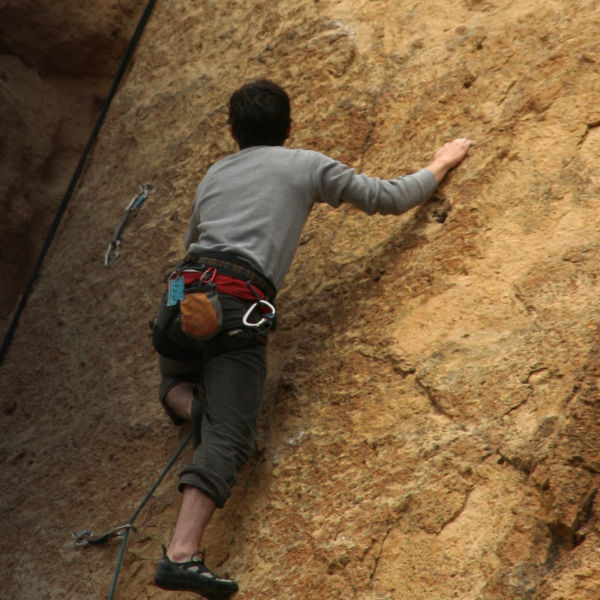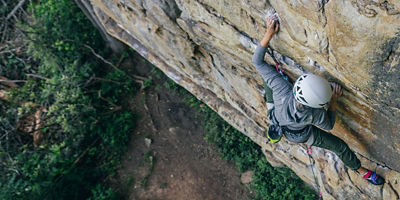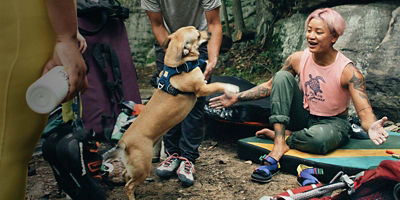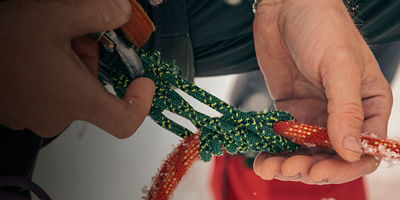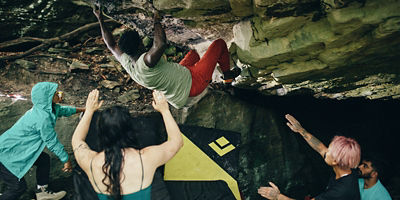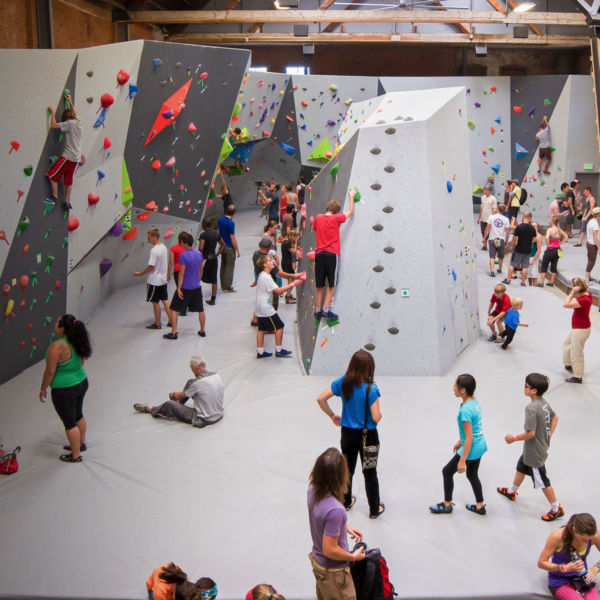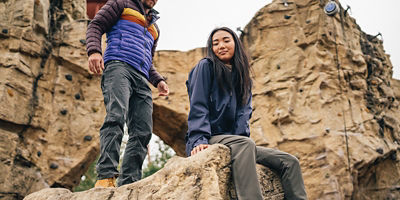
When you first learn to lead climbs in the gym, you might be in for a surprise. You’ll often discover that the maximum grade you’re capable of leading is far lower than your max top-rope grade. For new leaders, that gap could be up to several number grades. For experienced leaders, there’s no gap at all. That’s because climbing hard on lead isn’t necessarily about getting stronger or even improving your climbing technique. Instead, it’s about clipping strategically, which is a skill essential if you hope to progress to multi-pitch climbing. Before you venture onto bigger routes, you’ll need to become a confident and efficient leader on single-pitch terrain first.
So when you’re comfortable leading easy gym routes, have your lead belay certification, and are ready to see some real improvement, it’s time for that next step up to single-pitch skill fluency. This guide will cover everything you need to level-up your lead game:
- How to fall with confidence
- Tips for efficient leading
- Leveling up your gear
- How to get into multi-pitch climbing
How To Fall With Confidence
As paradoxical as it might sound, learning to lead with confidence is all about learning to fall with confidence. When you’re afraid of falling, you’re more likely to over-grip, overthink, clip too early, and hesitate before moving upward. All these habits sap your energy, slowing you down on individual routes—and stalling your progress as a climber.
If you find yourself reluctant to take falls on lead, start by taking practice falls with an experienced belayer. Getting comfortable with falling is an easy way to both improve your efficiency on the wall and to make sure safe technique comes second nature by the time you start taking big falls for real.
When you start practicing, follow this progression and keep the following safety tips in mind:
1. Find an experienced belayer.
And preferably someone who’s the same weight or slightly heavier than you. Remember: When you’re leading, your belayer should always be standing close to the wall with both hands on the rope, and should be constantly monitoring slack to give you a safe, soft catch.
2. Brush up on safe falling technique.
Before you start taking practice falls, remind yourself of the following safety protocol:
- When you think you might fall, shout “Falling!” to alert your belayer.
- Then, take a quick look to make sure your heels aren’t behind the rope and that there aren’t any large obstacles beneath you.
- To prepare to fall, press your toes against the rock, bend your knees, and spring backward away from the wall while simultaneously letting go.
- Always keep your palms open and facing the wall (never grab the rope when falling).
- When you swing back toward the wall, stick your feet out, bend your knees, and absorb the shock with your legs.
3. Fall at the bolt height.
When you’re ready to practice, find a climb that’s easy for you. It should be on a dead-vertical or very slightly overhanging wall. Lead to at least the fourth or fifth bolt and clip the draw. When the bolt is at your waist, have your belayer take in all but a few inches of slack. Shout “falling,” and push gently out from the wall. Easy, right?
4. Fall a few inches above the bolt.
Now, ascend back to your starting point, and climb a hold or two above it. The bolt should now be at mid-thigh level. Alert your belayer that you’ll be falling. They’ll have a little more slack in the rope this time. Spring outward from the wall, adhering to the technique tips above. After you land, talk to your belayer about how the catch felt, and make any necessary adjustments.
5. Fall with the bolt at your knees.
Repeat the above steps, this time with the bolt at knee level. Pause before falling to breathe and talk to your belayer—and even remind yourself out loud that you’re safe, too.
6. Fall with the bolt at your feet.
Repeat the above steps, this time with the bolt at your feet. If you need to, take this fall a few times until it feels easy and comfortable. Then, progress to bigger and bigger falls until you feel confident taking these longer falls, aka whippers. (Just make sure you’re never in danger of hitting the floor, nearby walls, or other climbers.)
7. Make it a regular practice.
Falling practice isn’t something you can do just once. Many climbers, no matter how experienced, find that their nerves return whenever they take a few weeks off leading. Whenever you notice a fear of falling creep back in, schedule a new practice-fall session. Many climbers will also make a point of taking a few practice falls at the start of every gym session just to stay in the habit.




















